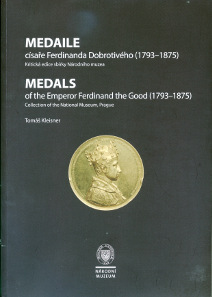by Ursula Kampmann
January 16, 2014 – In Germany, the word “Gutmensch” (“do-gooder”) has turned almost into a swearword in recent years. The byname of Ferdinand I of Austria, called the Good, has a similarly deprecatory quality. His naïve simplicity and different take on things was not generally appreciated. He became famous for saying things such as, “I’m the emperor and I want dumplings.” However, there is no historical record of any of these quotes. What we do know, on the other hand, is that Ferdinand spoke five different languages, played two musical instruments, loved agriculture and gardening and was positively enthusiastic about modern technology.
Born in Vienna in 1793, he experienced Napoleon’s rise to power during his childhood. He was a slow child and had to struggle with epilepsy and other illnesses on top of that. His parents did not think him very capable, so his father made sure in his will that although Ferdinand would be Emperor after his death in 1853, he would not de facto rule the country. This task would fall to a cabinet consisting of the omnipresent Prince of Metternich, Archduke Franz Karl of Austria, favourite son of the deceased, and Count Kolowrat-Liebsteinsky, Minister of the Interior. Now, Ferdinand could have protested against being patronised like that. But he did not. Just like he did not protest when his closest family forced him to step down in favour of his nephew Franz Joseph during the revolution of 1848.
Tomas Kleisner, Medals of the Emperor Ferdinand the Good (1793-1875). Collection of the National Museum, Prague. National Museum, Prague, 2013. 192 p., 21×29.8 cm, all illustrations coloured. Paperback. ISBN: 978-80-7036-396-6. Price: 300 CZK (= ca. 12 Euro) + Postage and Packing.
Tomas Kleisner’s richly illustrated and well written introduction to his corpus of the medals of Ferdinand the Good contains all this and more details about the life of the Emperor. The introduction is followed by a highly informative text about the role of medals in the 19th century. The author explains for instance who was involved in the decision-making process of issuing official medals in honour of the emperor, or how the mints organised the sales of those medals to private customers. In addition, there is a chapter on the emperor’s coinage as well as on the National Museum’s other collections.
The heart of the book – the catalogue of the medals – begins on p. 52. This catalogue is exemplary and I wish more authors would pay as much attention to detail as Thomas Kleisner does in describing and commenting the figures and in researching potential sources or influences in other media. The high-quality pictures and numerous additional illustrations are a visual delight. Every piece is illustrated in one metal. Occasion, place and year of minting as well as the die cutter are included in the title. Inventory number and numismatic details of the pieces in the Prague collection are followed by an exact description of the pictures, including the mostly Latin captions and their English translations. A commentary adds a number of interesting facts about the event itself, the die cutter or the particular issue in question. Each entry is completed by extensive bibliographic references.
This exemplary catalogue contains 61 medals and is a truly valuable addition to each library. All other 17 medals of Ferdinand of which pieces are known in coin cabinets or auction catalogues are mentioned in the introduction giving pictures and a description. They are also to be found in the index, which makes this book a real corpus. Tomas Kleisner’s contribution is twofold because not only has he written a wonderful book, but he has also translated the text into English in order to make it accessible for an international community.
Please contact the author via email if you are interested in purchasing a copy of the book. There are only 200 copies available and I recommend that you get hold of one as soon as possible.





